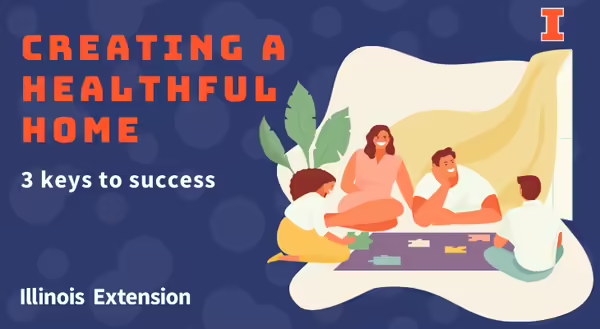
I view my home as a sanctuary, a place that I can unwind and practice self-care. Over the past year, it has also become a second office and gym. If you have kids, your home was likely serving as a classroom as well. Some of our homes are on triple duty, and that sense of sanctuary may have been lost; however, maintaining that aspect is essential to our overall well-being. A healthful home facilitates connection with friends and family, provides accessible foods that nourish mind and body and allows its inhabitants to de-stress and recharge.
Here are 3 elements to consider when creating a healthful home:
- Stock up on nutrient-dense foods and beverages. Our physical, mental, and emotional health are influenced by the foods we consume. Nutrient-dense foods, like beans, vegetables, fruit, and whole grains give us energy and protect us from oxidative stress due to the presence of phytonutrients and antioxidants. These foods also aid in weight management and help protect us from chronic illnesses such as diabetes and heart disease by regulating our blood glucose and blood pressure. Not only do these foods nourish our minds and bodies, but they are also satisfying and keep us feeling full longer. It’s a win-win-win because they taste great, too! To help yourself and your family eat more of these superfoods, keep them front-and-center at mealtimes, and ensure they are available as grab-and-go snacks as well.
- Some easy ideas include hummus and vegetables for dipping, black beans, avocado, and spinach rolled up with a whole-grain tortilla, fruit and yogurt parfaits, overnight oats, and peach or mango salsa with homemade cinnamon chips.
- Foster healthy relationships. Strong, healthy relationships are important throughout life and can impact our mental and physical well-being. As a child, you develop the social skills needed to form healthy relationships with others. Research shows that children with strong connections to supportive caregivers are more likely to be self-confident and be able to cope with life’s challenges. No matter your age, it’s important to identify what healthy relationships look like and how to keep connections supportive.
- Positive relationship behaviors include listening without judgment or blame, disagreeing respectfully, sharing feelings honestly, using kind words, tones, and gestures, compromising to reach agreements, and brainstorming solutions to problems together.
- Practice gratitude and appreciate the little things. The third key element to creating a healthful home is to create a positive environment and express gratitude towards one another. Research has consistently associated greater happiness and well-being with gratitude. According to positive psychology research, “gratitude helps people feel more positive emotions, relish good experiences, improve their health, deal with adversity, and build strong relationships.”
- Cultivate more gratitude in your home by being thankful for past blessings, not taking present good fortune for granted, and staying optimistic about the future. Start a gratitude jar and contribute something to it every day. On days you are feeling a bit down, pull from the jar and remember to be thankful each unrepeatable day.
Sources:
- National Institutes of Health. (2021, August 31). Your healthiest self: Wellness toolkits. Your Healthiest Self: Wellness Toolkits | National Institutes of Health (NIH)
- Harvard Health Publishing. (2021, August 14). Giving thanks can make you happier. Giving thanks can make you happier - Harvard Health